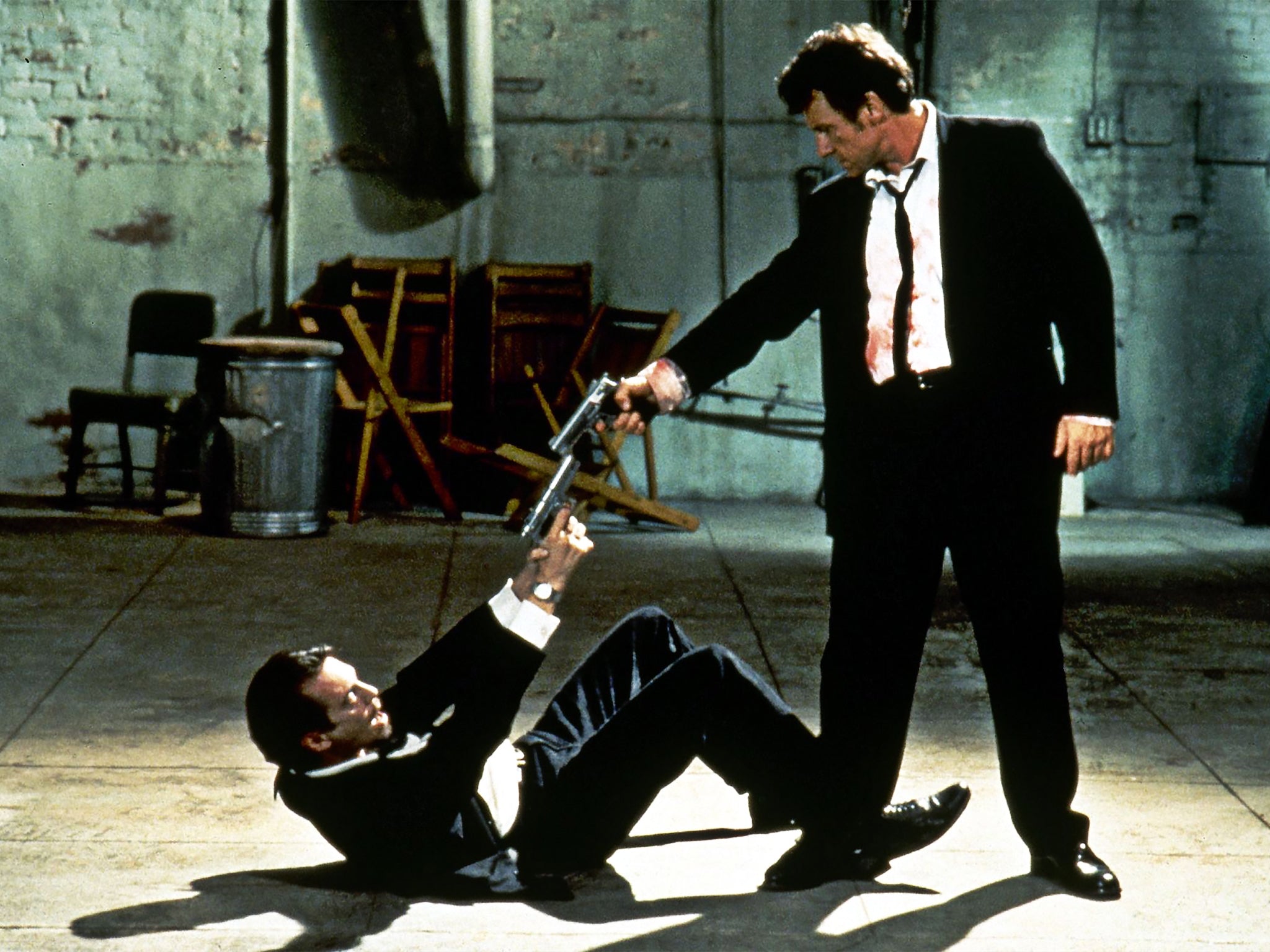
"Non-Linear, Borrowed Shades of Red" by Ron Evangelista
What do you get when you send a bunch of hardened, merciless criminals — including an undercover cop — on a heist, and not show the audience what actually happened during the mission? Apparently, one of the most memorable debut features in recent memory, responsible for sending the name of a former video store clerk into the directorial stratosphere. Borrowed black suits, ties, and leather shoes enveloped in several shades of deep expressionist red, Quentin Tarantino’s debut feature Reservoir Dogs still stands as one of the most intense, riveting, and downright entertaining crime films of all time.
Of course, if one were familiar with the wave of Hong Kong crime films, Ringo Lam’s City on Fire immediately comes to mind. Quentin essentially borrows (some would be more than happy to say “steals”) the last 20 minutes of the film, and makes something completely new out of it, like a cinematic equivalent of Warhol’s postmodern Campbell’s Soup Cans — taking something old, and transforming it into something that the artist can call “their own.” Such is indicative of Tarantino’s influential style, often partnered with gratuitous violence, razor-sharp dialogue, and frenzied climaxes. It is an artistic stroke that has both blessed and cursed the 1990s film industry, inadvertently flooding it with copious amounts of copycat movies trying to emulate his auteurial strokes, but all simply paled in comparison to the genuine ease and sheer explosiveness of Reservoir Dogs.
Opening with a seemingly pedestrian discussion between innocent men on Madonna, tipping, and a certain someone named Toby Wong, the picture pivots hard and brings us straight into the bloody action. In frenetic fashion, we witness a fatally wounded Mr. Orange (Tim Roth) screaming helplessly at the back of a car driven by a distraught Mr. White (Harvey Keitel), a foul-mouthed Mr. Pink (Steve Buscemi) struggling to make sense out of their failed expedition, and a strangely calm Mr. Blonde (Michael Madsen) asking them to not worry about a thing. It’s chaotic, brutal, and weirdly enticing — even when a poor police officer’s ear is getting chopped off, one cannot take their eyes off of the screen, dancing Michael Madsen and all. It’s a puzzle, which is ingeniously solved by its non-linear structure. Presenting it in this manner has effectively strengthened its narrative prowess, allowing for more opportunities for twists, turns, and surprises, which Tarantino has certainly taken advantage of.
Some have branded the film to be merely an exercise in style. If it is, so what? But that notion seems to be gravely mistaken. What’s evident is that Tarantino manages to create a cinematic coalescence of volatile elements and moments of profundity. The ending, wherein a wounded Mr. White holds a dying Mr. Orange right after he admits that he was an undercover cop, carries great social, political, and even religious undertones. Even if it were merely stylistic, then that is simply a visage that one would not easily forget. And yet, if one were to choose a lasting image of Reservoir Dogs, one would be hard-pressed not to pick its crisp, thunderbolt-esque, banger of an opening credit sequence — a bunch of dudes walking in slow motion, to George Baker Selection’s Little Green Bag.
Why? Simply because, above everything else, it looks so damn cool.